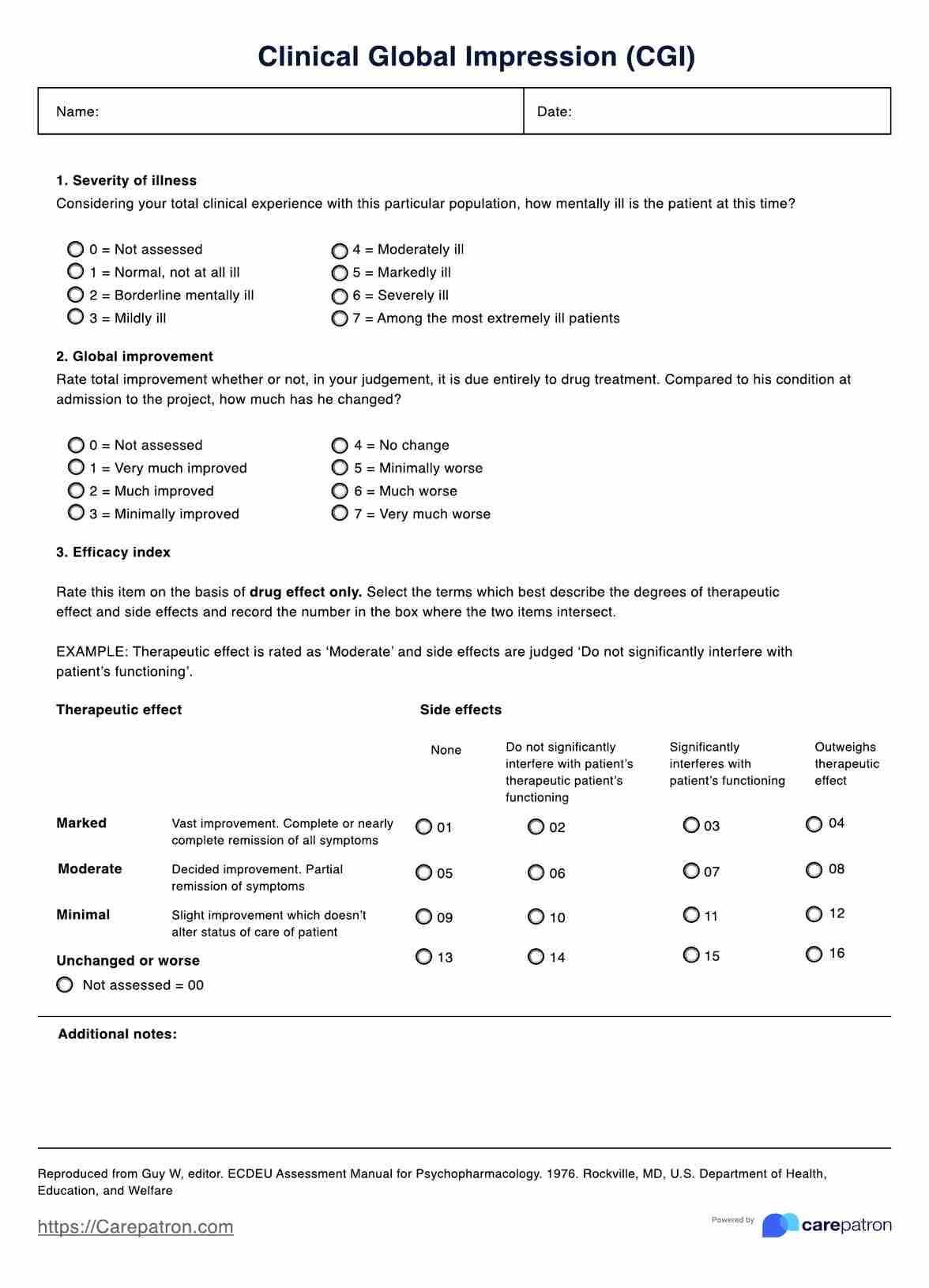It shouldn’t take you more than a minute, especially if you are highly experienced in treating mental health patients and if you are highly familiar with the patient you are evaluating. There are only three items to tackle, after all. But generally, it can be accomplished between 1-2 minutes.

Clinical Global Impression Scale (CGI)
Use the Clinical Global Impression Scale (CGI) for your practice to evaluate a patient’s mental illness, the severity of their symptoms, and the effectiveness of the medicine provided to them!
Clinical Global Impression Scale (CGI) Template
Commonly asked questions
Yes, it is. The scale is used generally by well-trained practitioners who have enough experience dealing with mental health patients. Of course, it’s good to point out that this scale is subjective given that the scale is answered by a healthcare practitioner observing a patient, so the ratings are based on their point of view.
For one, it is used generally by well-trained practitioners with enough experience dealing with mental health patients. The scale also focuses on a patient’s current condition and how the prescribed medicine they are taking is affecting them. The ratings will be based on factors that can be observed.
Here’s an example:
Let’s say a patient sets up an appointment a year prior to using this scale. During that time, the patient was obviously in a bad place, so they were diagnosed with a mental illness, and a treatment plan with medication was given to them.
Then, the patient comes back for a routine evaluation, and now they look so much better, showing no signs that the mental illness is affecting them, even physically. The practitioner can rate the first part of the scale with 1. If the patient says the medication is working wonders, then the rating for the second part can be either 1 or 2.
As for the last part, since the patient mentioned that the medication is working wonders and they are obviously looking better than they did when they first came to the clinic, then the therapeutic effect of the medicine can be rated as Marked. If the patient is able to function well despite taking the medicine, then the side effects portion can be rated 01 or 02.
If things are not easily observed, then that’s the reason why appointments are scheduled. The professional and the patient can discuss things to help inform the ratings.
EHR and practice management software
Get started for free
*No credit card required
Free
$0/usd
Unlimited clients
Telehealth
1GB of storage
Client portal text
Automated billing and online payments











